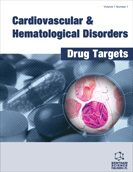Abstract
A review of the existing evidence on the impact of percutaneous coronary intervention (PCI) in the setting of stable coronary artery disease (CAD) indicates that in patients with chronic coronary artery disease and good left ventricular function, PCI does not confer any clear benefit in terms of hard long-term clinical outcomes, such as mortality, myocardial infarction or the need for subsequent revascularization, as compared with medical conservative treatment. By comparing the benefits against cost considerations, it seems that many percutaneous interventions that are currently performed in patients with non-acute CAD are probably not justified. Determination of the functional significance of coronary artery disease can often be a challenge. Conventional coronary angiography and imaging tests, although suitable for risk stratification, may not be satisfactory as independent guides for specific decision-making regarding the optimum management of these patients. The development of more efficient methods for the identification of coronary lesions that should be the target of coronary intervention is certainly needed.
Keywords: Percutaneopus coronary intervention, coronary angioplasty, coronary artery disease
Cardiovascular & Hematological Disorders-Drug Targets
Title: The Role of Coronary Angioplasty in the Management of Patients with Stable Coronary Artery Disease
Volume: 7 Issue: 1
Author(s): Demosthenes G. Katritsis
Affiliation:
Keywords: Percutaneopus coronary intervention, coronary angioplasty, coronary artery disease
Abstract: A review of the existing evidence on the impact of percutaneous coronary intervention (PCI) in the setting of stable coronary artery disease (CAD) indicates that in patients with chronic coronary artery disease and good left ventricular function, PCI does not confer any clear benefit in terms of hard long-term clinical outcomes, such as mortality, myocardial infarction or the need for subsequent revascularization, as compared with medical conservative treatment. By comparing the benefits against cost considerations, it seems that many percutaneous interventions that are currently performed in patients with non-acute CAD are probably not justified. Determination of the functional significance of coronary artery disease can often be a challenge. Conventional coronary angiography and imaging tests, although suitable for risk stratification, may not be satisfactory as independent guides for specific decision-making regarding the optimum management of these patients. The development of more efficient methods for the identification of coronary lesions that should be the target of coronary intervention is certainly needed.
Export Options
About this article
Cite this article as:
Katritsis G. Demosthenes, The Role of Coronary Angioplasty in the Management of Patients with Stable Coronary Artery Disease, Cardiovascular & Hematological Disorders-Drug Targets 2007; 7 (1) . https://dx.doi.org/10.2174/187152907780059092
| DOI https://dx.doi.org/10.2174/187152907780059092 |
Print ISSN 1871-529X |
| Publisher Name Bentham Science Publisher |
Online ISSN 2212-4063 |
 9
9
- Author Guidelines
- Bentham Author Support Services (BASS)
- Graphical Abstracts
- Fabricating and Stating False Information
- Research Misconduct
- Post Publication Discussions and Corrections
- Publishing Ethics and Rectitude
- Increase Visibility of Your Article
- Archiving Policies
- Peer Review Workflow
- Order Your Article Before Print
- Promote Your Article
- Manuscript Transfer Facility
- Editorial Policies
- Allegations from Whistleblowers
- Announcements
Related Articles
-
Biomarkers of Asthma: Recent Patents from 2009-2011
Recent Patents on Biomarkers Editorial: Leptin and the Cardiovascular System - A Target for Therapeutic Interventions
Current Pharmaceutical Design Oral Antiplatelet Treatment in STEMI: Current Practice and Future Considerations
Current Pharmaceutical Design Immune-Mediated Mechanisms in Atherosclerosis: Prevention and Treatment of Clinical Manifestations
Current Pharmaceutical Design The Role of P2Y<sub>12</sub> Receptor and Activated Platelets During Inflammation
Current Drug Targets Control of Menopausal Transition through Physical Exercises
Current Women`s Health Reviews Selective Estrogen Receptor Modulators and Aromatase Inhibitors for Breast Cancer Chemoprevention
Current Drug Targets Coarctation of the Aorta - The Current State of Surgical and Transcatheter Therapies
Current Cardiology Reviews Heart Valve Lesions In The Antiphospholipid Syndrome
Current Rheumatology Reviews Green Tea Polyphenols as an Anti-Oxidant and Anti-Inflammatory Agent for Cardiovascular Protection
Cardiovascular & Hematological Disorders-Drug Targets The Efficacy of Psychological Therapies for Specific Phobias in Adults and Some Unanswered Questions
Current Psychiatry Reviews Hirsutism in Polycystic Ovary Syndrome: Pathophysiology and Management
Current Pharmaceutical Design Cardiovascular Effects of Current and Future Anti-Obesity Drugs
Current Vascular Pharmacology Inhibition of Candida rugosa Lipase by Different Extracts of Five Algerian Plants and their Antioxidant Activities
Current Enzyme Inhibition The Location of Vascular Flap is Related with Daily Activity Patterns in Non-traumatic Acute Aortic Syndrome in a Chinese Population
Current Signal Transduction Therapy Retrospective, Observation Study: Quantitative and Qualitative Effect of Ezetimibe and HMG-CoA Reductase Inhibitors on LDL-Cholesterol: Are There Disappearance Thresholds for Small, Dense LDL and IDL?
Recent Patents on Cardiovascular Drug Discovery Does HbA1cc Play a Role in the Development of Cardiovascular Diseases?
Current Pharmaceutical Design Cardioprotective Effects of the Polyphenol Hydroxytyrosol from Olive Oil
Current Drug Targets Outcomes of Anticoagulant Therapy with Low-Molecular-Weight Heparin (LMWH) and Warfarin for Thromboangiitis Obliterans (TAO)
Current Vascular Pharmacology Biological Consequences of Dysfunctional HDL
Current Medicinal Chemistry


























